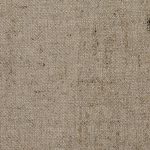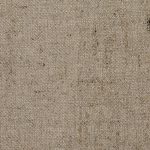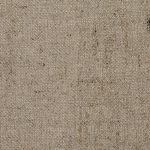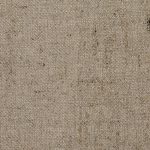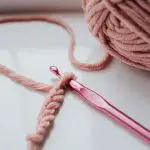If you’re looking for a DIY fabric freshener that’s gentle on sensitive skin, try mixing distilled water, white vinegar, and essential oils. Fill a clean spray bottle halfway with water, add one cup of vinegar, and mix in 10-15 drops of your favorite essential oil. Shake well before each use and spray from 6-8 inches away. This natural blend not only freshens fabrics but is also safe for your skin. There’s more to learn about storage and best practices!
Table of Contents
Key Takeaways
- Use distilled water and white vinegar as a base for a gentle, hypoallergenic fabric freshener.
- Add 10-15 drops of essential oils for fragrance without irritating sensitive skin.
- Test the freshener on a small fabric patch to ensure no adverse reactions occur.
- Store the mixture in a dark, sealed container away from sunlight to maintain its effectiveness.
- Regularly check and refresh the freshener, discarding any discolored or separated mixtures.
Understanding Sensitive Skin and Fabric Fresheners
When it comes to choosing fabric fresheners, understanding your sensitive skin is essential, especially if you often experience irritation from harsh chemicals.
You’ll want to look for products labeled hypoallergenic or free from synthetic fragrances. Natural ingredients, like essential oils, can provide a pleasant scent without triggering reactions.
Always check the ingredient list for irritants, such as alcohol or sulfates, which can exacerbate sensitivity. Testing a small fabric swatch before applying it to larger items can help you gauge any reactions.
Benefits of Homemade Fabric Fresheners
When you make your own fabric freshener, you’re choosing a product that’s gentle on your skin and free from harsh chemicals.
You can also feel good knowing you’re using eco-friendly ingredients that benefit the planet.
Plus, with customizable scents, you can create a fragrance that perfectly suits your style.
Gentle on Skin
Homemade fabric fresheners are a fantastic choice if you’re looking for a gentle solution to keep your fabrics smelling fresh without harsh chemicals.
Unlike store-bought options, which often contain synthetic fragrances and irritants, your DIY freshener can be tailored to suit your skin’s sensitivity. You can choose soothing scents like lavender or chamomile, which not only freshen up your fabrics but also promote relaxation.
Since you control the ingredients, you can avoid allergens and additives that might irritate your skin. Plus, using a homemade freshener means you won’t have to worry about chemical residues lingering on your clothes or linens.
You’ll enjoy peace of mind knowing your fabrics are fresh, soft, and safe for you and your loved ones.
Eco-Friendly Ingredients
Creating your own fabric freshener not only benefits your fabrics but also the environment. By opting for eco-friendly ingredients, you reduce chemical waste and promote sustainability. Many store-bought fresheners contain harmful substances, but homemade versions let you choose natural components that are safe for both you and the planet.
Here’s a quick look at some eco-friendly ingredients you can use:
| Ingredient | Benefits | Usage |
|---|---|---|
| Baking Soda | Neutralizes odors | Mix with water |
| White Vinegar | Natural deodorizer | Use as a base |
| Essential Oils | Pleasant scents, therapeutic | Add a few drops |
| Distilled Water | Safe and gentle | Dilute other ingredients |
| Aloe Vera Gel | Softens fabrics | Add for extra moisture |
Embrace these options for a fresher, greener home!
Customizable Scents
One of the standout advantages of making your own fabric freshener is the ability to customize scents to suit your personal preferences. You can mix and match essential oils to create a fragrance that resonates with you.
Whether you love the fresh aroma of lavender, the invigorating scent of citrus, or the calming notes of eucalyptus, the choice is yours! You also have control over the intensity—add a few drops for a subtle hint or more for a stronger scent.
This customization not only makes your fabrics smell great but also allows you to avoid synthetic fragrances that might irritate your sensitive skin. Plus, experimenting with different combinations can be a fun and creative process!
Essential Ingredients for a Gentle Fabric Freshener
A gentle fabric freshener can transform your textiles, leaving them smelling delightful without harsh chemicals. To create a soothing blend, you’ll need a few essential ingredients that are safe for sensitive skin. Here’s a quick overview:
| Ingredient | Benefits |
|---|---|
| Distilled Water | Acts as a base, safe for all fabrics |
| White Vinegar | Eliminates odors, softens textiles |
| Baking Soda | Neutralizes smells, gentle on skin |
| Essential Oils | Adds fragrance without irritants |
| Aloe Vera Juice | Moisturizes fabric, soothes skin |
Using these ingredients, you can craft a freshener that not only deodorizes but also cares for your fabrics and skin, ensuring a pleasant experience every time.
Step-by-Step Guide to Making Your Fabric Freshener
Before you plunge into making your fabric freshener, gather all the essential ingredients to guarantee a smooth process.
Start by taking a clean spray bottle and filling it halfway with distilled water. Next, add one cup of white vinegar; it’s great for neutralizing odors.
Then, mix in 10-15 drops of your favorite essential oil, like lavender or lemon, for a pleasant scent.
Once you’ve added everything, secure the spray lid tightly and give it a good shake to blend the ingredients.
Test the mixture on a small fabric patch to confirm there’s no reaction. If all’s well, you’re ready to use your freshener!
Simply spray lightly onto fabrics, and enjoy the delightful aroma!
Tips for Using Your DIY Fabric Freshener
While using your DIY fabric freshener, it’s important to keep a few key tips in mind to maximize its effectiveness.
First, always shake the bottle well before each use to guarantee the ingredients are evenly mixed.
Always remember to shake your fabric freshener bottle before use to ensure a perfect blend of ingredients.
Test the spray on a small, inconspicuous area of the fabric to avoid any unwanted reactions.
When applying, hold the bottle about 6-8 inches away from the fabric to avoid saturation, which can lead to dampness or spots.
For best results, use it on freshly cleaned fabrics, allowing the scent to settle in.
Finally, experiment with scents—adding a few drops of essential oils can personalize your fabric freshener, giving it a unique touch that reflects your style.
Enjoy freshening up your home!
Storing and Preserving Your Fabric Freshener
To keep your DIY fabric freshener effective, choose the right storage container that seals tightly.
Remember, its shelf life depends on how you store it, so aim for a cool, dark location.
Proper storage will help maintain its fragrance and potency longer.
Best Storage Containers
Choosing the right storage container for your DIY fabric freshener can make all the difference in preserving its effectiveness and scent.
Opt for a dark glass spray bottle to protect the mixture from light, which can degrade essential oils. A tight-fitting lid is essential to prevent evaporation and contamination.
If you prefer a plastic option, make sure it’s BPA-free to avoid any harmful chemical leaching.
Label your container clearly, noting the contents and date of preparation, so you’ll always know what you’re using.
For smaller batches, consider using a smaller spray bottle for easy handling.
Shelf Life Tips
Once you’ve selected the right storage container for your DIY fabric freshener, it’s important to focus on how to keep it fresh for as long as possible. Here are some tips to extend its shelf life:
- Seal it tight: Always close the container securely after each use to prevent air exposure.
- Check for contaminants: Verify your spray nozzle and container are clean to avoid introducing bacteria.
- Use distilled water: If your recipe includes water, opt for distilled to minimize impurities that can spoil your freshener.
- Label your mixture: Write the date you made it on the container, so you know when it’s time to make a new batch.
Cool, Dark Location
Storing your DIY fabric freshener in a cool, dark location can greatly enhance its longevity and effectiveness. Light and heat can break down the essential oils and other ingredients, reducing their power. Instead of keeping your freshener on a sunny windowsill, find a cabinet or drawer away from direct sunlight.
A stable, cool temperature helps maintain the scent and guarantees the mixture remains safe for sensitive skin.
Make certain the container is tightly sealed to prevent air exposure, which can also affect the quality. Always label your freshener with the date you made it, so you’ll know when it’s time to make a fresh batch.
Frequently Asked Questions
Can I Use Essential Oils if I’m Allergic to Fragrances?
If you’re allergic to fragrances, it’s best to avoid essential oils too. They can still trigger reactions in sensitive individuals. Consider using fragrance-free alternatives or consult a healthcare professional for safe options tailored to you.
How Often Should I Use the Fabric Freshener on My Clothes?
You should use the fabric freshener every few washes or as needed. If you notice any irritation, reduce frequency. Always test on a small area first to guarantee your clothes remain comfortable and fresh.
Is It Safe for Pets to Be Around the Freshener?
Imagine a garden where every flower blooms safely. If you’re using the freshener, it’s best to keep pets away until it dries. They might be curious, but their safety should always come first.
Can I Add Color to My Fabric Freshener?
You can add color to your fabric freshener, but be cautious. Some dyes might stain fabrics or irritate sensitive skin. Test a small area first to guarantee it doesn’t cause any unwanted reactions.
What Fabrics Should I Avoid Using This Freshener On?
You should avoid using this freshener on delicate fabrics like silk, lace, and certain synthetics. These materials can react poorly, leading to discoloration or damage. Always test on a small area first to guarantee safety.
- Tetron Fabric for Marine Applications: Durability and Use Cases - June 18, 2025
- Tetron Fabric for Outdoor Furniture: Weather Resistance and Care - June 18, 2025
- Tetron Fabric for Wall Coverings: Style and Application Tips - June 18, 2025


